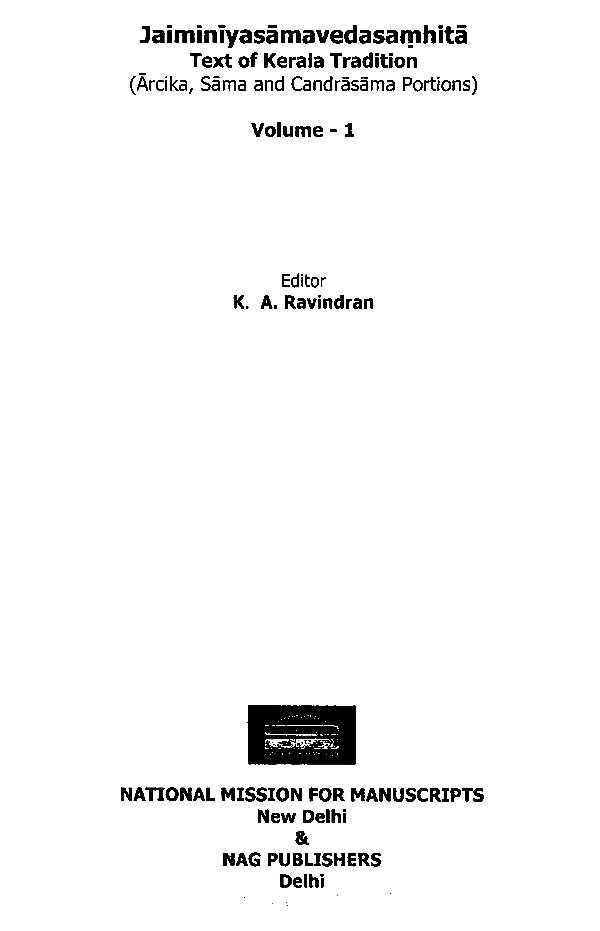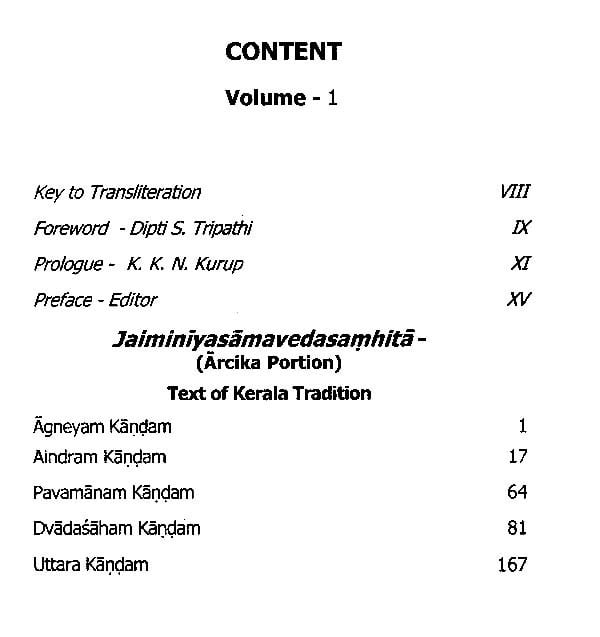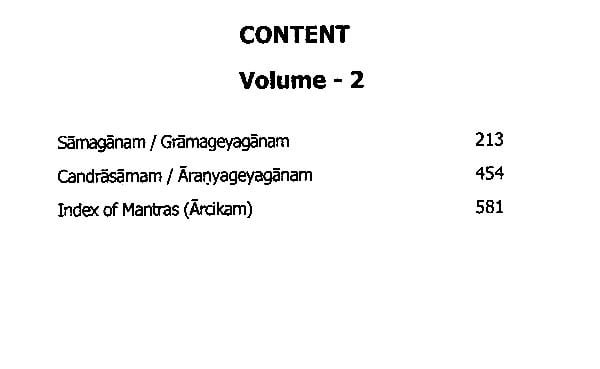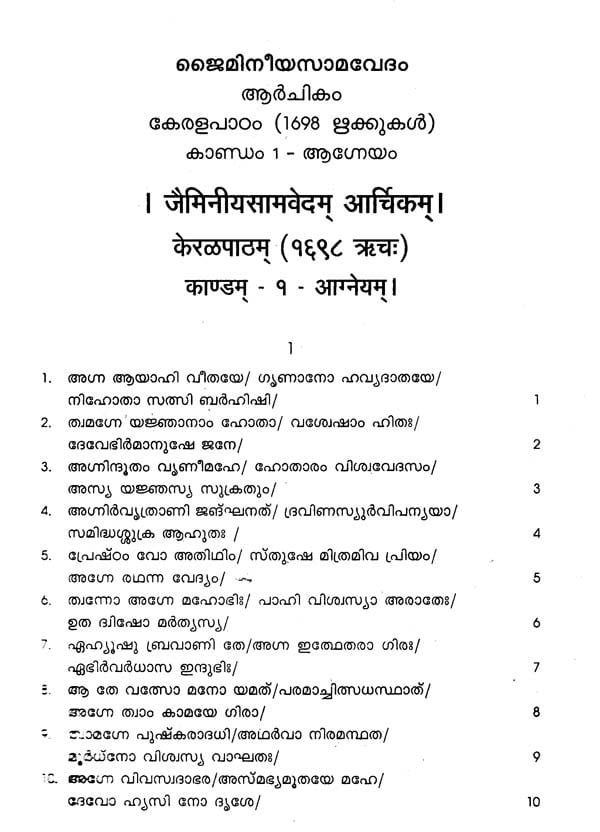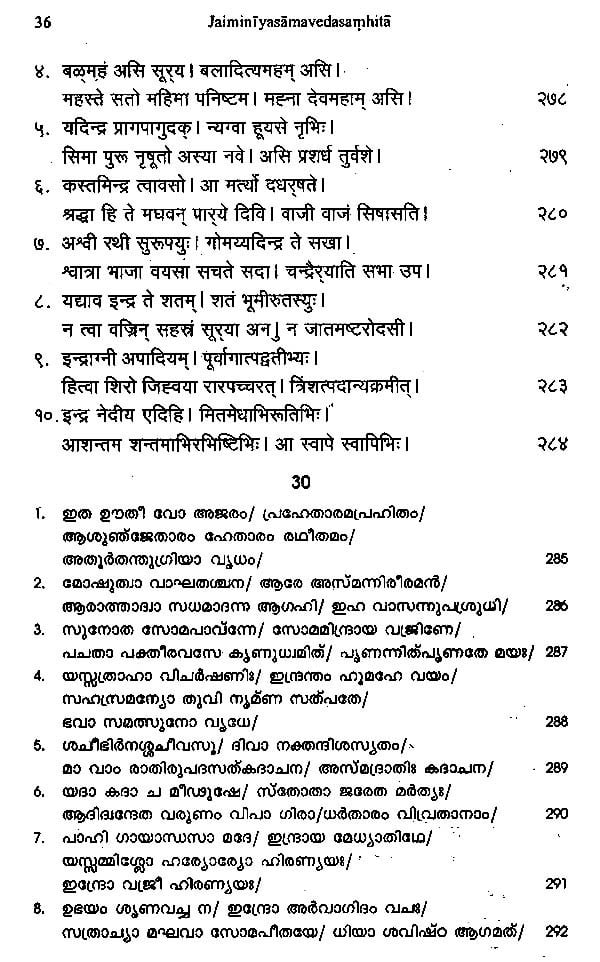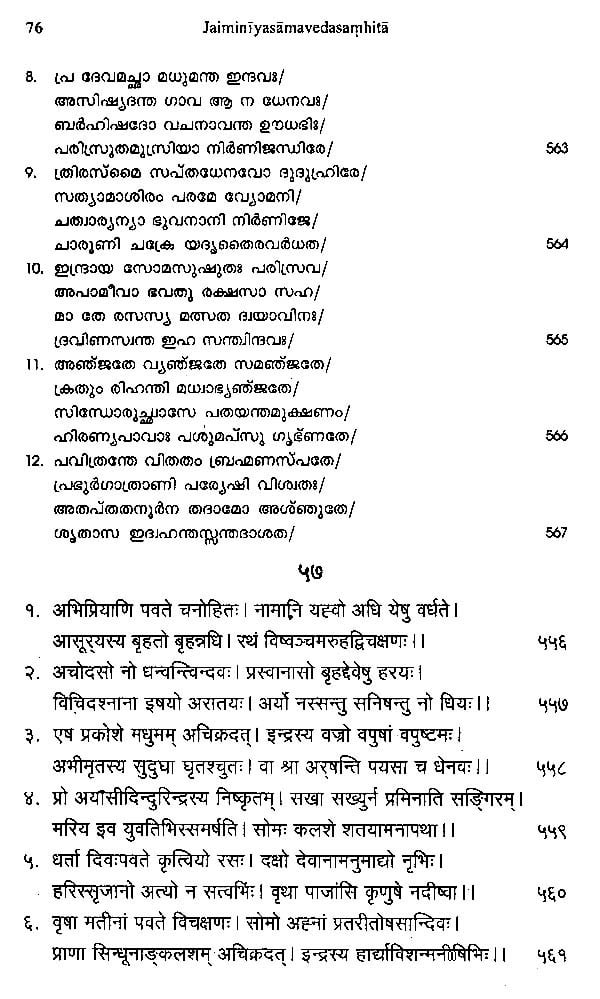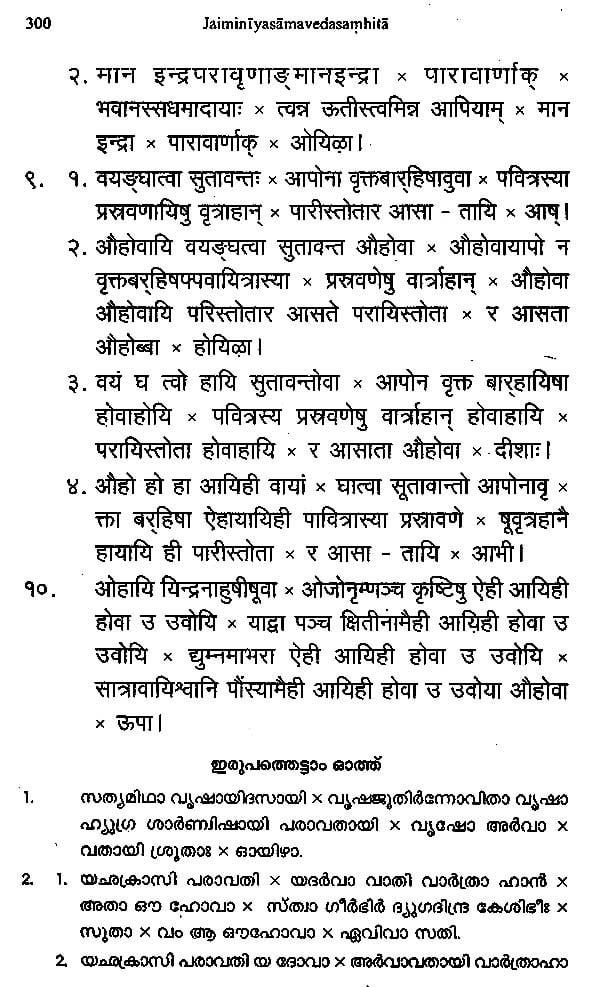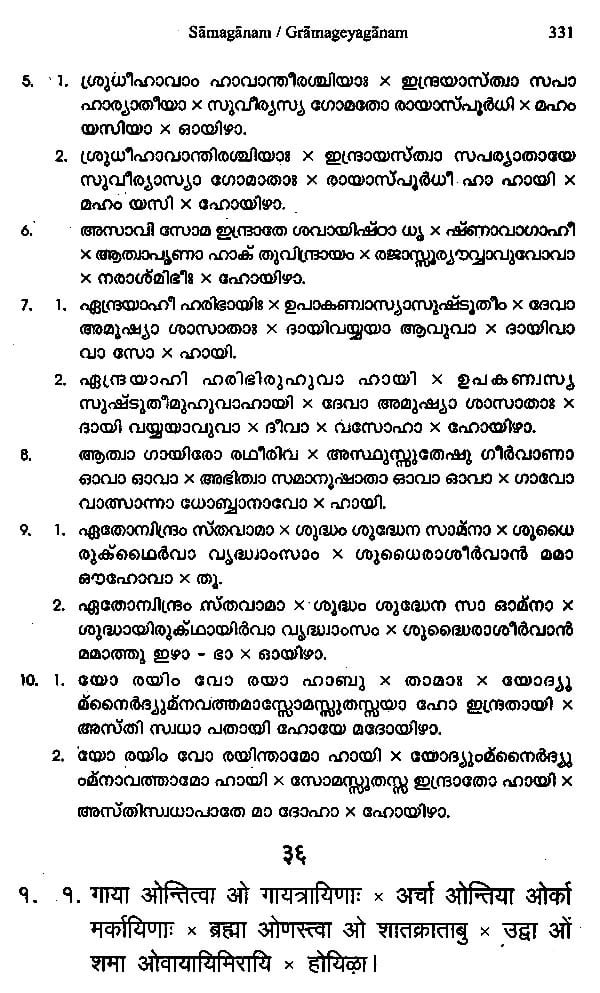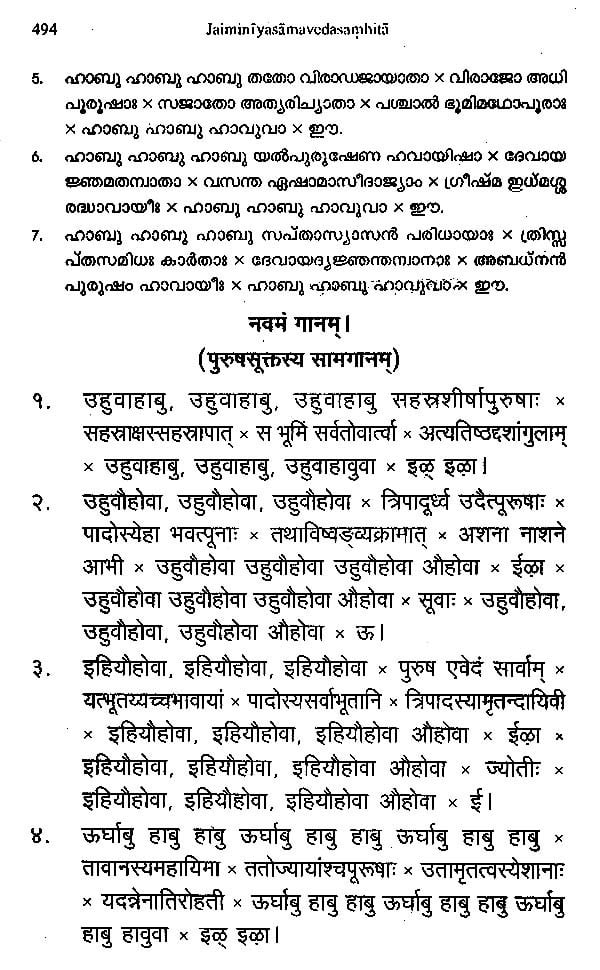
जैमिनीयसामवेदसंहिता मूल केरलपरम्परानुसार: आर्थिक, साम तथा चन्द्रासाम भाग- Jaiminiya Sama Veda Samhita Text of Kerala Tradition: Arcika, Sama and Candrasama Portion (Set of 2 Volumes)
Book Specification
| Item Code: | AZE352 |
| Author: | K.V. Ravindra |
| Publisher: | NAG PUBLISHERS |
| Language: | SANSKRIT AND MALAYALAM |
| Edition: | 2013 |
| ISBN: | 9789380829029 |
| Pages: | 632 |
| Cover: | HARDCOVER |
| Other Details | 9.50x6.50 inches |
| Weight | 1.44 kg |
Book Description
Recently the National Mission for Manuscripts has taken up a project for publishing rare and unpublished manuscripts in three formats-(a) Facsimile (b) Critical edition (Illustrated and single copy manuscript) (c) Critical edition with annotation and translation. The series has been named as Prakashika. Here, in this book the eminent scholar Dr. K. A Ravindran has critically edited and transcribed the Jaiminiyasāmaveda samhita (Text of Kerala Tradition).
The peculiarity of the Samaveda chanting. which is not met with in the chanting of other Vedas, is noticeable. The Samaveda chanting of Kerala including all its modes like Arcika, Sama Candrasama, Oha and Osani has many characteristic features when compared to the chanting of other parts of India Also the arrangement of the text of Jaiminiyasamaveda of Kerala is different from that of other parts of the country.
Considering all these factors the publication of Samhith of Jaimintyasamaveda of Kerala version including Arcika. Sama and Candrasama portions, in both Devanagan and Malayalam script, has relevance.
Dr. K. A. Ravindran, presently is Associate Professor in the Department of Sanskrit-Sahitya and in-charge-of Sanskrit-Vedic Studies at SSUS, Kalady. He is Sub-editor of the revised third edition of Sanskrit-Malayalam Dictionary of Kanippayyur Sankaran Namboothirippad and an Author/ Editor/Associate editor of several books in Malayalam, English and Sanskrit. Dr. Ravindran is currently the Co-ordinator of the project 'Remaking of Samaveda CDs, sanctioned to Sanskrit-Vedic Studies, S.S.US.. Kalady, by Ministry of Culture, Govt of India through Sangeetha Nataka Academi, New Delhi. He is honoured by Kadavallur Anyonyaparishath Kadavallor, Thrissur, Kerala and was presented the Fedabandhu award during Kadavaltur Anyonyam 2011 for his contributions in the field of preservation and pampering of Vedas.
Of the several branches of Samaveda, only three exist today and they are Kauthuma, Rāṇāyaṇīya and Jaiminīya. Among the three, Jaiminīyasamhita is followed by the Nambūtiris of Kerala. There were twenty one Nampūtiri families following JSV in Kerala. Besides the Nampūtiri tradition, there is the Tamil tradition of JSV also located at Kodunthirappully Village at Palakkat, which also is in the verge of extinction. Due to several reasons, the younger generation is not interested in keeping up this heritage and hence both these traditions are struggling for existence. Even among the living traditional Pandits, fully equipped with all the five Pathas viz, Arcika, Sama and Candrāsāma, Uha and Uşani, are now absent in both traditions. Therefore the compilation of all those Prakṛtipathas together becomes a necessity for the preservation of this great heritage.
**Contents and Sample Pages**
